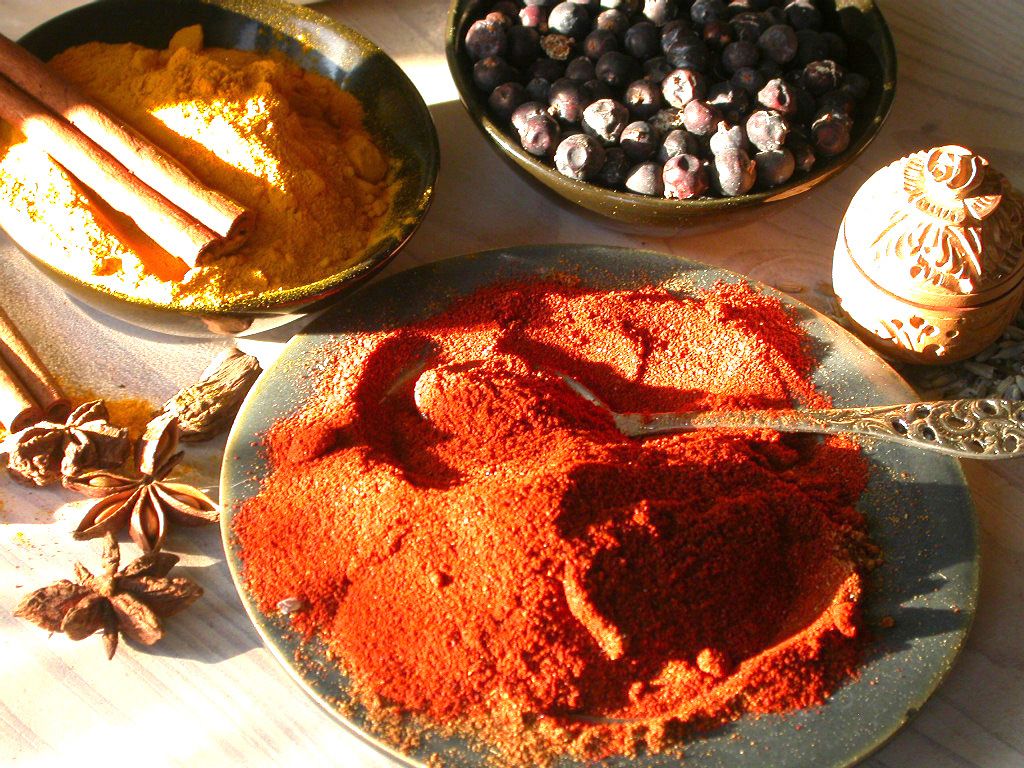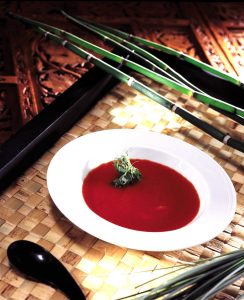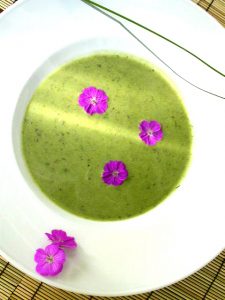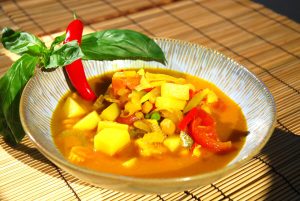Ayurveda – Well suited to Everyday Life

Tips on how to practice easily at home and how to stay healthy through the winter
I can already hear the comments: “Oh, Ayurvedic living is so complicated!” But is it really? We asked Carina Alana Preuß, managing director of the Ayurveda Parkschlösschen in Traben-Trarbach. The 32-year-old, who grew up in an Ayurvedic environment, has been managing the 5-star establishment since last year. 25 years ago, her parents founded the first address for Ayurveda in Germany. Carina glows, inside and out, and whoever meets her is immediately drawn to the Ayurvedic way of living. She conveys her message with great passion and freshness and her expertise as an Ayurveda expert and yoga teacher is more than convincing. In order to make this ancient Science of Life (the meaning of the term “Ayurveda”) even more accessible and approachable to greater number of people over and beyond the classic Panchakarma cure offered at the hotel, she also makes use of various social media channels. She has, for example, developed an online course that is quick and easy to navigate, even for beginners. It is obvious from her online blog that she is the best example of a lived Ayurvedic lifestyle. A mentor in matters of contemporary Ayurveda, someone who knows what she’s talking about and who takes it very seriously. Living in the here and now, however, she does occasionally treat herself to French fries.
Is Ok for an Ayurvedian to eat French Fries?
Carina Alana Preuß: Exceptions and being undogmatic are part of Ayurveda. It’s just a question of being sensible about it. After indulging in a portion of French fries for example, it’s best to take Triphala (an Ayurvedic herbal formula that helps digestion). Or after a late night and a heavy dinner, one can skip breakfast or have a soup day. If I don’t want to get too carried away, sweet potato slices baked at home with salt, curry powder and oil are my healthy alternative to frozen foods and deep-frying in oil.
Everyday hotel life, further training, constantly on the go – how do you manage to stay in balance?
That’s a very good question. I really do invest a of energy in my endeavors to one day make the world a healthier and more awareful place. My diary may sometimes be bursting at the seams, but my food is sacred to me. I make no compromises there and insist on a healthy, warm and freshly prepared lunch.
So Ayurvedic food diet is not that complicated…
Many people complain that the recipes are highly complex and are skeptical about the many spices. However, we have designed Ayurvedic spice blends which I use too when I cook. At the hotel we have also developed an Easy Ayurveda Cooking Guide, which shows how to quickly conjure up curries, ragouts or soups in three steps for a healthy hot meal.
What are the three steps?
First, wash the vegetables and cut them into small pieces. Step 1. Heat two tablespoons of olive oil, coconut oil or ghee and add half a tablespoon of mustard seed, frying them until they pop. Step 2: Add spices and vegetables to the pan or pot, stir for 2 minutes then reduce the heat. Step 3: add liquid, e.g. an appropriate vegetable juice, coconut milk or broth. Season to taste. The cooking time for the curry or ragout is 10 to 15 minutes, for the soup 30 minutes.
Do you have any tips for the different Ayurveda types?
Vata-type persons should add extra oil or sauce to the dish, use a lot of ginger and vegetables that are grounding and sweet. It’s recommended that they eat very little raw food or bitter vegetables. Pitta types are advised to avoid chilli or pepper. They should use mild seasoning and avoid sourness, i.e. choose more alkaline vegetables. Small portions are best for Kapha types. They should season their food with cayenne pepper or chilli and opt for different cabbage-type vegetables as well as lots of those that are green, light and bitter, with very little oil and only light sauces.
How does a hotel manager find the same peace and quiet as the guests?
I try to get eight hours of sleep. That works wonders for me, especially if I can be asleep by 10 pm. Meditation centers me as well. And when my mind starts vibrating and I am about to get completely carried away, yoga breathing exercises such as Ujjayi breathing are a great help. They slow down my brain waves and help me to inwardly relax and see the bigger picture again. Then there are the calming oil massages, of course, which I have also taught to my partner.
The best ayurvedic emergency brake for stress?
The yoga of laughter, meditation or going for a walk in the forest. Laughing, especially, has been proven to reduce stress hormones. Even if you don’t really feel like laughing, the brain still believes you and it works. Give it a try. There are several “Laughter Yoga” videos on YouTube and you just have to dare to do it! So I stand in my living room and laugh. Not because I have something to laugh about just then, but because I have no desire to wallow in my inner mire. It certainly works.
How does Ayurveda help us stay healthy through the winter?
I know from my own experience that the best way to avoid a cold is to maintain a healthy lifestyle. Then the immune system stays strong as well.
And what if the cold is already coming on?
I always have dried ginger, turmeric and honey at home. At the first sign of a scratchy throat, I make myself an extra-spicy ginger tea (not that tasty!) and lick a half a teaspoon of a turmeric-honey mixture (in a 50:50 ratio) every two hours. On a day like that, it’s best to avoid cold or raw foods and to wrap up warmly. Important: Be sure to act as soon as the very first symptoms appear, or it may be too late.
So Ayurvedic living is very easy, if one…
… eats foods every day which give energy and are neither heavy nor cause tiredness. Be aware: Salad is difficult to digest and can make one feel tired as well. It’s not suitable as a main meal either at noon or in the evening.
… doesn’t drink anything while eating or 30 to 60 minutes after a meal.
… drinks two litres of water a day (coffee, tea or other beverages don’t count).
. … only eats when hungry which is not the same as having cravings or an appetite. Not every hunger needs to be satisfied: If it announces itself after 8 or 9 p.m. it’s better to say “Sorry, too late! You can have something again tomorrow”.
. … gets enough sleep and, as far as possible, between the hours of 10 pm and 2 a.m. This is the time when the most important anti-aging hormone is released and when the deepest regeneration takes place.
… keeps a positive outlook on life and pursues a profession that one finds meaningful.
… performs light exercises daily in the fresh air.
… meditates for 5 minutes.
Ayurveda, health food, healthy living, life concept, Parkschlösschen Traben-Trarbach

CultureAndCream Author from Munich
Since many years I am working as a freelance writer of beauty and lifestyle topics for magazines like Vogue or Glamour. What drives me again and again: not only the product or the trend, it is the people and the story behind – and what it does to us. In addition, my job often takes me to the most beautiful places in the world. Even in private one likes to find me in one or the other wellness location, research not excluded. Culture and Cream, then. Always in the luggage: fragrance, sunprotection and lipstick. What color? Red. What else





